|
Could experienced drivers in your family use a little refresher? Register: https://www.sasksafety.org/mature-driver-refresher-course-listings.html For many drivers in Saskatchewan, the only driving lesson they received was during "Driver's Ed", back in their High School years. This was followed by a license examination, which is sometimes a one-and-done adventure, with no required follow-up training. This training can feel like an eternity ago. Additionally, the profound changes to driving best practices such as electronics, vehicle makes, signage, traffic flow, and various other advancements over time can leave even an experienced driver feeling out of practice. The reality is, mature driver or not, we could all use a little refresher every now and then! Course Description: This completely free 6-hour Mature Driver Refresher Course is strictly informational and offered in a positive, open class environment. Participants' driver’s licenses are not affected and there are no required examinations. This training increases confidence when navigating Saskatchewan’s increasing city and highway traffic. It provides insight into how to adapt your driving habits based on the physical changes the body goes through as it matures. Find a FREE course in your community: https://www.sasksafety.org/mature-driver-refresher-course-listings.html Topics Covered:
Who taught you how to tow a trailer?
In Saskatchewan, you might hear “My Grandparent”, “My Mom or Dad”, "My Boss”, or the shockingly common answer… “Nobody, I taught myself”. After all, there is no special license required to tow utility trailers, or for that matter, all but some of the largest and most complex trailers. Every day in Saskatchewan, happy retail workers can be seen gladly waving goodbye in the rear-view mirror of fancy new recreational trailer operators. Often, all the happier for the potential repair work that may come from a new owner’s first attempts at backing a camper into a well-treed campsite.
Register for FREE Safe Trailering: https://www.sasksafety.org/online.html
So then, who takes the responsibility of communicating all the details about hitch types, electrical hookups, load & weight distribution, cornering, and all those other intricacies that might contribute to a mechanical problem, big new dent, or serious traffic incident?
While coaching from a parent, spouse, sibling, friend, or employer can be very useful (although at time stressful), it cannot replace the most fundamental steps in learning any new skill… training & purposeful practice!
The “Safe Trailering” course brings Saskatchewan residents seeking valuable instruction on safely driving while towing a trailer unencumbered access to a brand new and completely free training program developed by knowledgeable and experienced subject matter experts.
Utilizing closed course demonstrations, multiple detailed camera angles, and digital graphic visualizations, this program covers topics such as:
Whether new to towing a small utility trailer with supplies for a landscaping project or navigating a Cabela’s or Walmart parking lot with a new “home on wheels”, everyone can find key takeaways in the Council’s free Safe Trailering program. For those requiring driver or operator evaluations, the Council also offers fee-for-service in-vehicle assessments to provide feedback and document competency.
The Council and its free programs are supported by the following multi-year organizational sponsors: CAA Saskatchewan; Crescent Point Energy; Heavy Construction Safety Association of Saskatchewan; K + S Potash; Meridian Surveys; Saskatchewan Association for Safe Workplaces in Health; Saskatchewan Common Ground Alliance; Saskatchewan Construction Safety Association SaskEnergy; and WorkSafe Saskatchewan.
Access Career Safety Education here: https://www.sasksafety.org/career-safety-education.html
Victoria Day Weekend is the official kick-off to a Saskatchewan Summer. Outdoor activities are top of mind this time of year, as Saskatchewanians get out into the wilderness and explore the backcountry. Perhaps you will spend part, or much, of your long weekend behind bars. Hopefully so.
By late May, many riders have already performed their pre-season mechanical inspections but what about those daily or mid-trip pre-ride checks? Who knows what may have changed since you parked your bike beside the tent, outside the hotel, or in the parking lot of your favourite retail stop. A quick walk-around check before jumping back on, regardless of where you are, and a more thorough routine check before each ride, can be the difference between a great ride and one that ends poorly.
Avid Moto-Camper & Motorcycle Instructor David Parker takes us through his routine inspection checklist.
Have anything to ad? Share your must-check inspection items in the comments below! Maybe you have a song you whistle or a pre-ride inspection dance? We'd be happy to hear about it. Free training and resources are made available thanks to contributions from our Donors, Members and Sponsors that believe in our shared goal of creating a province of safety excellence. Want to support content just like this? Play a role in the creation of a province of safety excellence. Donate Today at: www.sasksafety.org/support-us - Charitable Registration Number: 11914-0382-RR
Our Content Team took to the streets in Regina, SK, to ask “How do you prepare for winter driving?”.
Out of all the responses we received, four key points emerge. What were the most important winter driving tips from Saskatchewan drivers? Find out below! Be Visible - Saskatchewan drivers know that visibility can be a major challenge in the winter. That's why they take extra time to clear their vehicle of ice, snow, and debris before starting a drive. Proper headlights are also important for visibility in traffic. Daytime running lights (DRL's) are sometimes not enough to be seen, especially in snowy, foggy or misty weather. Be Gentle - Saskatchewan drivers check the weather and road conditions before their trip begins. They also place a greater emphasis on steering smoothly, while gently accelerating and braking when behind the wheel. Gimme Space - Saskatchewan drivers know that leaving early is a necessary adjustment to make in the winter driving season. Icy roads mean that following distances need to increase to at least 5 seconds, allowing drivers more time to react. Saskatchewan drivers understand that intersections become especially slippery, to adjust, a driver must manage their speed and give extra space for others. IDPE - Saskatchewan drivers understand that preparation is the best way to prevent collisions. However, in a critical moment, operational skills are a necessary defense. SGI suggests drivers practice the IPDE system. First, (I) - Identify the hazard or risk. Next, (P) - Predict the effect that hazard will have on your path. Then, (D) - Decide your best course of action. Finally, (E) - Execute that action.
What winter driving tips have you learned over the years? Share them in the comments below to help new Saskatchewan drivers!
Harvest season in Saskatchewan means you will be sharing the road with farm equipment. The rush to “get it done” before the weather turns cold means early mornings and late evenings for farmers. On highways, rural roads, and even in town, the winding down of farming season will bring large equipment onto public roads. Why is this dangerous? Due to how large farming equipment can be, collisions involving them are more impactful. Between 2016 and 2020, there were 96 collisions involving farm equipment on Saskatchewan roads. Of these 96 collisions, 44 would result in injuries, and eight people lost their lives. Reviewing these numbers, we can see that collisions with farm equipment carry very serious repercussions. What are some special hazards to watch out for? The most obvious one is size and weight. These machines are larger than any other vehicle on the road, making them particularly dangerous obstacles to collide with. Farm machinery can also be deceptively wide and long, with parts protruding, taking up more than one lane width, or even the entire driving surface on more narrow rural roads. Farm equipment may be operated in muddy environments and as a result may carry or track mud and other obstacles onto the driving surface. How do we avoid collisions involving farm equipment?
Passing farm equipment is by far the most dangerous act, putting both the driver and operator in a high-risk situation. On hills, turns, and into the sunlight, maintaining sightlines beyond the machinery is difficult. Farm equipment is also an irregular shape on the road. It is hard for your eyes to properly register, and for your mind to predict the speed and movement. Before passing, ensure you can see many kilometres down the road, and that you have the time and space to pass safely. Here are our top tips for sharing the road with farm equipment:
With kids back to school, summer vacations coming to an end, and farmers working hard in the fields, autumn in Saskatchewan is a time of change. How do you adjust your driving during this busy season? Have you got a story to share? Contact us or post in the comments below! “I didn’t even see them!” are the classic words spoken following a 4-wheel on 2-wheel collision. After so many variations of the ‘unseen motorcycle’ story have been repeated by so many drivers after collisions, it’s time to ask the question – Why can’t other drivers see motorcycles in traffic? The first and foremost reason may be a result of habit. In the spring, motorcycles are not a fixed presence on Saskatchewan roads. Many "caged" drivers have not shared the road with motorcycles for over 5-6 months. Simply put, the 4-wheeler's subconscious mind may have forgotten that the 2-wheelers even exist. While that may explain some bad springtime habits, the mystery of the unseen motorcycle remains at large all season long. So, what else could be causing this lack of awareness? Let's look at some factors that seem to hide bikers from the eyes (and minds) of other Saskatchewan drivers. Selective attention: Brains set to ‘driving mode’ are looking for obstacles. Many young drivers train themselves to scan for car and truck shaped objects - a habit that does not account for slender, two wheeled objects. The solution? Be as visible as possible. Break through the visual bias that keeps you in the background. Honk, wave, and wear bright colours. Peripheral blindness: The average peripheral vision is weak at best, and is geared towards movement. With the average driver looking for box-like vehicles, that leaves motorcycles to get lost in the blur. The solution? Appeal to peripheral vision with movement. Hand waves, head nods, gentle speed variation. Stand out however possible. Blind spots: Not just applicable to rear mirrors and big fluffy dice, those pillars surrounding the windshield can already obscure a full-sized vehicle… Think of how completely a motorcycle gets swallowed up in these additional blind spots. The solution? Recognize when you are approaching a vehicle at the 10 or 2 o’clock positions, knowing that you may be obscured. Avoid lingering in rear gates that might fall into blind spots. Headlights: A motorcycle’s single headlight is more likely to be passed over and ignored, as it does not ‘match’ the two-beam headlights a driver is expecting to see on the road. 4-wheel vehicles with burnt out headlights experience the same effect – they don’t match the ‘normal’ form of a vehicle, so other motorists mysteriously don’t register their presence. The solution? Keep your headlights on bright in the daytime. Keep them clean and maintained at all times. Sunlight: Both fighter pilots and birds of prey attack “out of the sun”. Why? Because contrast (shadow) stands out more than anything when registering new objects. The difference is, these attackers want to be hidden, motorcyclists should not. The solution? Notice your shadow. If your shadow is pointing down road, those cars are having trouble seeing you! Avoid wearing black, grey or other background colours. Familiarity: More than 50% of collisions occur within 8km of the home, and 25% occur within the first 3 minutes of driving. These familiar roads close to home get neglected by drivers feeling a false sense of security. The solution? Don’t fall for this yourself! Those last few turns before arriving home may tempt the mind to wander. Stay vigilant from start to finish. At the end of the day, it is up to each rider to take safety into their own hands. As we learn the psychology behind this spring 'psych-out' that plagues many drivers during the early riding season, we can help remind drivers that yes, motorcycles exist, and yes, we are back for another year of sharing the road.
Leading the Council's vehicle and traffic training in Saskatoon is Michelle Reaburn, a long-time instructor and traffic safety specialist. In-person training gets a boost in the bridge city as Michelle teaches the Defensive Driving Course, which is always in high demand. Michelle delivers higher level training such as the Professional Driver Improvement Course, while also performing in-car driver assessments in Saskatoon. Michelle shares her story below. 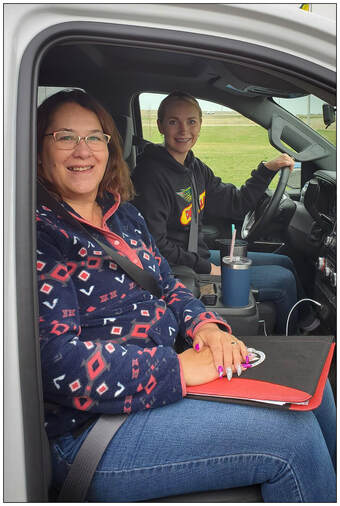 Michelle Reaburn performing an in-vehicle assessment in Saskatoon, SK Michelle Reaburn performing an in-vehicle assessment in Saskatoon, SK My background is in transportation. I started as a driver, moved into training, and then on to facilitation within the transportation industry. My focus has always been passenger safety and road safety. Over the last 15 years, I’ve expanded into developing and facilitating “Respectful Workplace” and “Leadership within the Workplace” courses. I have been teaching the Canada Safety Council's DDC and PDIC courses since 2014. In 2015, I was contracted by the Saskatchewan Safety Council to facilitate the SGI Defensive Driving course in Saskatoon. Driver Assessments were added into my responsibilities shortly after that. Since coming onboard full-time with the Council my portfolio has expanded to include “15 Passenger Van Safety” and “Trailer Towing”. “Skid Smart Collision Avoidance” and FIT testing are soon to be added. I am also on a couple of teams dedicated to the development of Council programming. I am really excited about this new opportunity and getting to know everyone. Training courses are hosted as open enrollment on our training calendar, with many more available upon request. View our traffic training courses to find the right fit for you.
Strap on that gear and start your engines, there is fresh snow in Saskatchewan! Snowmobile, Snow Machine, Sled, and depending on who you ask, Skidoo. The list of names seems to go on and on. Whatever term your community uses, these recreational vehicles are special. Snowmobiles can turn the open rolling prairie into a fluffy white ocean, yours to explore. You never know what will lie beyond that next hill. That is why every ride starts with strapping on all the gear. Set an example for your community, use the "All The Gear, All The Time" (ATGATT) motto! The weather may be different for every journey, but that riding gear shouldn't change one bit. When we are talking snowmobiles, the slang terms just keep on coming! 'Bony' trails, filled with 'landmines', can easily ruin your ride. Nobody wants to get 'socked in' under a nasty 'inversion'. Don't we all want to hit fresh 'pow' on that next beautiful 'bluebird' day? In other words... What else can we do to ensure there are no snowmobile injuries in our community? One easy action would be to make sure that we aren't riding alone. When possible, use the buddy system. If you must ride alone, tell someone about your plans to ride. Another good habit could be to only ride on established trails, roads, or pathways. That way, help can find you if you are unable to call for it. Another question to consider, what are the riding conditions in your area? Are you a member of your local snowmobile club? Keeping up to date on trail and weather conditions can help you stay prepared. The following are some online snowmobile communities in Saskatchewan, just click the text to open their Facebook group pages: Snowmobile North East Sask, Saskatchewan All Terrain Vehicle Association, Sask Snow, Northern Lights Snowmobile Association, Saskatoon Snowmobile Club, Tri Valley Trails, Estevan Snowmobile Club, Lakeland Tree Dodgers Snowmobile Club, Last Mountain Lake Drifters, Rough Rider Snowmobile Club, Whiteswan Snow Hawks Snowmobile Club, Prairie & Pine Sno Riders snowmobile club, SSRA - Straightline Snowmobile Racing Associate. A safe riding community is one that shares and cares. Share your safety tips with new riders so the Saskatchewan snowmobile community may thrive for generations to come. Happy trails! On January 10th, 2022, our skid pad played host to a wonderful group of guests. Our friends at Regina Regional Local Immigration Partnership (RRLIP) and Catholic Family Services Regina connected us with Saskatchewan drivers who are new to driving on snow and ice. Experienced Saskatchewan drivers, SGI representatives, and local media also joined in the fun. Together, they practiced emergency driving maneuvers with expert instruction from our traffic team. Our Traffic Safety Specialist, Al Gall, delivered program messaging to local media outlets. Of course, our own content team was on the scene as well! Enjoy this recap of our special day on the skid pad: Benson Akinbami had lived in the United Kingdom for many years before coming to Saskatchewan. He has enjoyed ice-free transportation for most of his life. After completing Skid Smart, Benson learned driving skills he may pass along to his family. "I cant sing it enough - for everyone who has the opportunity to come down here... and learn how to actually avoid trouble before trouble strikes."
"I was very curious about this activity... Because I had not taken (this type of) training anywhere." Says Nirad Shukla, a Saskatchewan newcomer from India. "After taking this course, I am 100% confident". "The final exercise was very useful for me" said Thi Cam Van Mai, who arrived in Saskatchewan with her family one year ago. "I think that I can control my vehicle in winter condition(s)". "If you have an incident, which you'll have from time to time I'm sure, you've gotten the experience now that you can control your car". Says Regina's Darlene Lepine. Darlene has lived in Saskatchewan her whole life, but was still able to learn some new skills to practice. "You might be able to stop an accident from happening". Skid Smart in the News Participating media outlets had a great time documenting the Skid Smart Collision Avoidance Course: CTV Morning Live: https://regina.ctvnews.ca/video?clipId=2357074 CTV Evening News: https://regina.ctvnews.ca/sask-safety-council-sgi-host-winter-driving-course-1.5734524 Global Evening News: https://globalnews.ca/news/8502861/saskatchewan-safety-council-winter-driving-course/?utm_source=dlvr.it&utm_medium=twitter Our Traffic Safety Specialist Al Gall had some fun answering questions on John Gormley's live radio show: Gormley Live: https://www.ckom.com/2022/01/17/show-segments-monday-january-17-2022/ The comments section was lively on the Regina Leader Post's Facebook page: Regina Leader Post: https://www.facebook.com/reginaleaderpost/posts/6269266139756462
Overcast commutes, foggy days, and snowy weather. These conditions of varying darkness await Saskatchewan drivers, especially in winter months.
Daytime running lights (DRL’s) do not activate your taillights, which brighten up your vehicle so other drivers can see you in low-light conditions. Automatic headlights are also unreliable, as the automated system sometimes has trouble recognizing these low-light conditions.
Along with regularly inspecting all of your vehicle lights, activating your low-beam headlights helps ensure that your vehicle will stay bright and visible in the winter driving season where low-light conditions are common. There is no harm in using low-beam headlights even in the daytime, so when in doubt, flick your headlights to the “On” position. Just remember to turn them “Off” when your journey is finished! In Saskatchewan, our seasons come in full force. From blazing hot summers to stone cold winters; from the darkest days to seventeen hours of sun - our Province is a land of extremes. So then, why is there a bias in our seasonal preparation? At the earliest possible moment in the spring, excited residents break out T-shirts, shorts, and other warm weather attire from storage. Vehicles are eagerly cleaned out and tuned up for summer driving. With all this excitement and preparation for one season, why is it that we tend to ignore the warning signs of an approaching winter? Perhaps it is because we want to squeeze out every bit of fun from the last whisper of these warmer days, and perhaps there is some element of denial that very soon our dark autumn environment will change to a familiar wintery white. That’s right, the dreaded “S” word will be here before we know it (We know, dreaded only by some). Yes, this means “Snow”, and for those driving in Saskatchewan’s Winter - the “S” word can also have more dangerous meanings, like “Slip” “Slide” and “Skid”. ‘That’ day will come eventually. You know - ‘that’ first snowfall, and ‘those’ frozen roads. ‘That’ period of dangerous driving, where drivers must suddenly adjust their habits. The change in road conditions can happen very quickly. Unfortunately, that also means collisions will be more frequent, and insurance claims will be high. Anyone with experience in the auto industry knows this season well. Autoworkers across Saskatchewan, like Kenton King, know firsthand that this ‘slippery season’ can be a busy one. With some smart preparation, this season can be different for you. Why wait for the path to your garage or winter storage shed to become wet with snow? You can be ready for winter driving conditions now, by loading your vehicle with brushes, scrapers, and survival gear before the snow flies. You can switch to your winter tires early this year, and you can practice winter driving techniques as a review to get you into that ‘winter driving mindset’. Need to drive somewhere? Why not plan ahead and leave earlier than you usually would, since you know that winter driving conditions add time to most trips.
Prepare yourself at ‘this’ time of year, so ‘that’ time of year won’t be so difficult. Take it from autoworkers in Saskatchewan – you don’t want to be part of the dangerous and expensive mess that is ‘Slippery Season’! Today, our own Traffic Safety Specialist and Skid Smart Collision Avoidance Instructor, Al Gall, participated in the kickoff of SGI’s November Traffic Safety Spotlight alongside Tyler McMurchy, SGI Media Relations. The two provided information on intersection and winter driving safety before fielding questions. Intersections account for almost half of the total collisions in Saskatchewan. The onset of winter driving conditions only amplifies the danger in these high-risk areas.
This November, make intersection safety a part of your driving awareness efforts. What preparations can you make to ensure safe winter driving? The ultimate title of ‘man’s best friend’ has been well earned over the last millennia by our canine companions. That is, until recently. A new companion has arrived: It is electronic, it fits in our pocket, and even though its computing power surpasses most ten-year-old desktops, we still underwhelmingly call it a ‘phone’. As these electronic devices become more integral to our everyday lives, this new iteration of ‘man’s best friend’ is now regularly in our hands at the coffee shop, grocery store, at our workplaces, and in our homes. Rather than setting aside dedicated time to operating these devices, they are invited with us wherever we go. This is where a danger exists, because as we rely on our mobile electronic tools more and more, the temptation to multitask grows stronger. The lines are becoming blurred between a safe moment and an unsafe moment to operate these handheld devices, because their use as we complete daily tasks is perceived as more natural every day. What can be said about our new electronic companions that have not become obvious? Yes, they are a distraction. Yes, they have become necessary. And no, there is no alternative for them in sight. Discovery, communication, entertainment-it’s all there on our devices. For those concerned about dangerous distractions, the expulsion of these devices from society cannot be a reasonable objective. No rational argument can be made to remove these machines from our lives. Limitations on their use, like distracted driving laws, are working towards a solution. But what about other situations where multitasking on a mobile device becomes a distraction? The real problem with our new electronic best friend is becoming clear. These powerful handheld computers can present a danger to our wellbeing because we seem unable to resist operating them whilst conducting our daily business. Learning which situations are suitable to sneak a quick look down at our devices, and which are not, is a valuable step in understanding the risky situations we put ourselves in every day. So, when is an appropriate time to utilize these mobile tools? If it is too distracting to use a device while driving or cycling, is an everyday task like walking down the street also too hazardous to justify operating our ‘phones’?
In 2018, researchers in British Columbia at UBC Kamloops investigated this concept of distracted walking. Researchers set up cameras to track the prevalence of mobile device use at a busy intersection. They found that over 1/3 of pedestrians were using a device while crossing the street. The analysis revealed that “A significant difference was found between mean gait characteristics of step velocity, cadence, double limb support, and mean step length during normal walking and walking while texting”. Long study short, these distracted pedestrians became an identifiably different type of pedestrian as they used their electronic devices. Prevention of injuries and fatalities is the reason we design and implement walking infrastructure and traffic accommodation. These safety measures are designed to protect us as undistracted pedestrians, focused on walking, with our eyes generally directed forward. But, could any preventative measure be enough for the new generation of multitasking, tech-savvy, and extremely distracted pedestrians? Being late is a terribly anxious feeling. If we are driving a vehicle while running late, this terrible feeling is only amplified. Every red light becomes a personal attack, every vehicle in front of us becomes an obstruction, and worst of all, there is almost no solution to the problem. Once someone has fallen behind schedule, that time has passed and can’t be brought back. This is how being late can provoke dangerous temptations. Some drivers will try speeding, quick maneuvering, rushing through intersections, and otherwise turning their vehicle into a Formula 1 racecar, all in the hopes of “saving time”. In this situation, sending a text message with warnings and excuses of your impending lateness can become a major temptation. When we see these reckless drivers on the roads, it’s obvious to the rest of us in traffic - “Wow, that person must be late!”. As we contemplate these pressures while driving in a rush, running late must be considered the most significant daily temptation to push our driving behaviors beyond the realm of safe. So, what are the risks of driving with this rushed mindset? When it comes to distracted driving, most of us know that using a cell phone is unsafe. For about 11 years, there have been laws in Saskatchewan that carry some considerable punishments for doing so. Even with these well-known rules that have been proven to save many lives, “driver inattention and distraction is responsible for 21% of all collisions” – https://www.sgi.sk.ca/handbook/-/knowledge_base/drivers/distracted-driving. Speed also continues to be a major problem in Saskatchewan. Drivers, at times, claim that “being late” was their reason for driving above the speed limit. Being late is known to create anxiety, and an anxious person is one who will more likely resort to unsafe behaviors. There is a temptation to correct lateness by speeding, which multiplies the chances of a collision. It seems that no matter how aware a driver may be of these dangerous behaviors, the temptation to overcome a mistake, like leaving late, becomes too strong to ignore. If we think about it, the simple truth is this: By the time our vehicle pulls out of a parking spot, the opportunity to “save time” with any significant effect is gone. So, let's rewind to the source of being late, to the original reason why one would become anxious, and otherwise tempted to engage in speeding, distracted driving, or a variety of other unsafe behaviours in the first place. Any journey starts by leaving the current destination. So, what can be done in preparation, before our journey begins, to ensure that we are ready to drive while staying distraction and anxiety free? |
Archives
November 2023
Categories
All
|




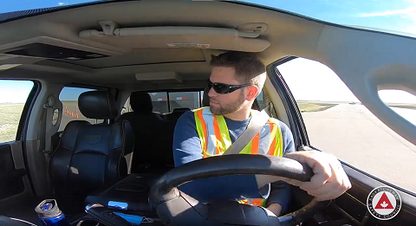




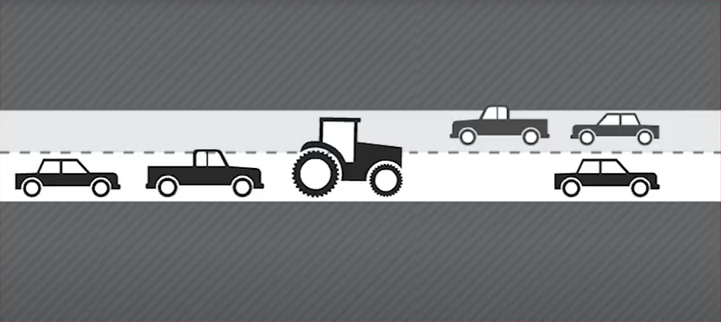

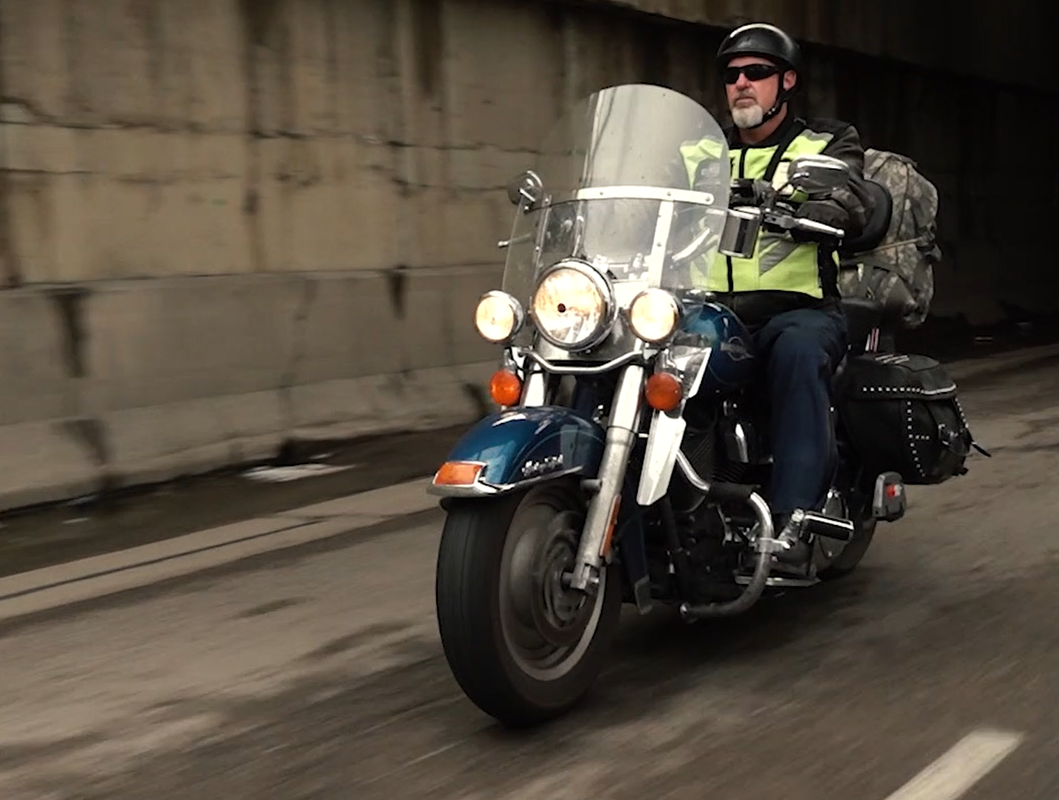
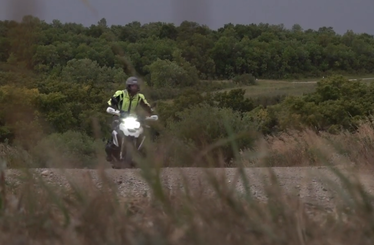
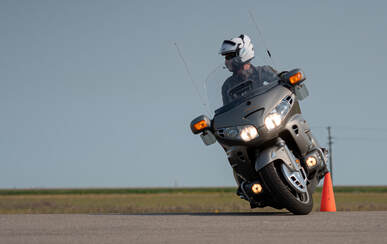
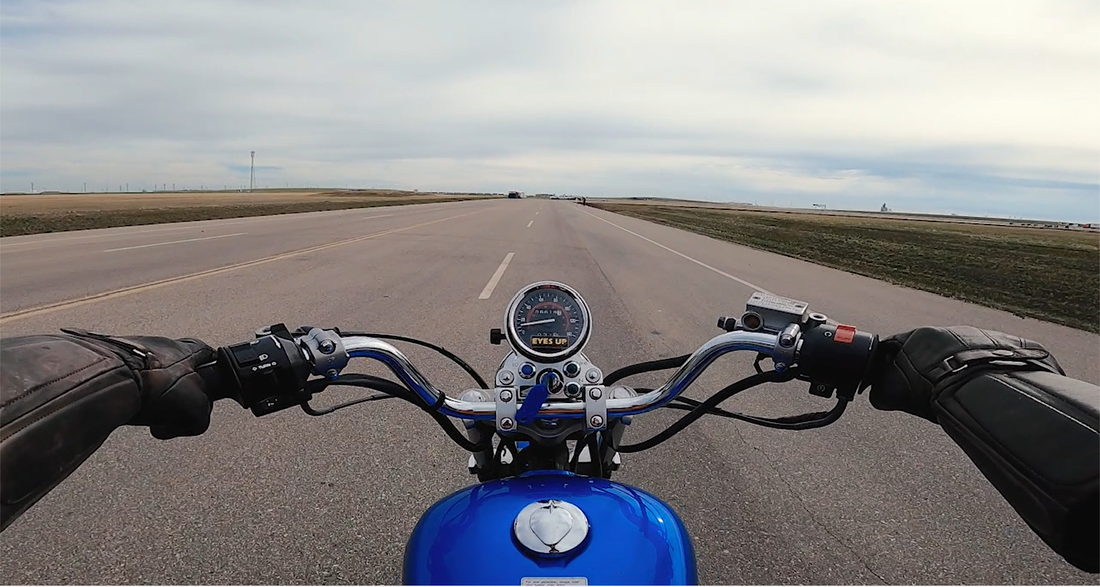
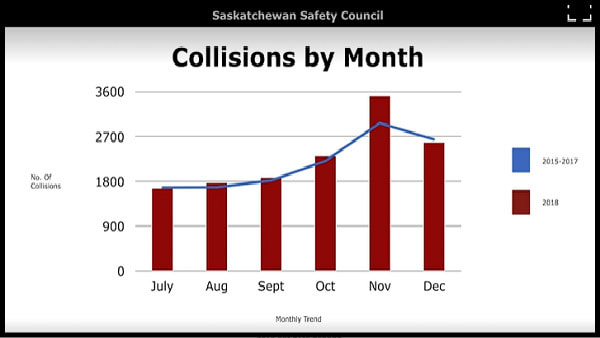
 RSS Feed
RSS Feed
